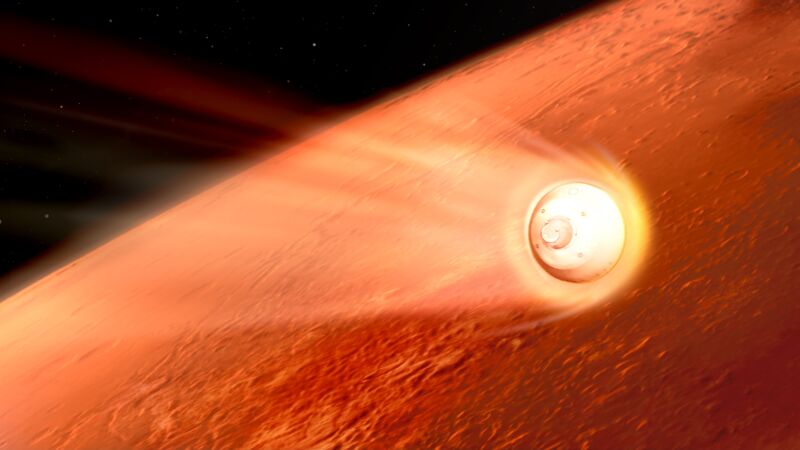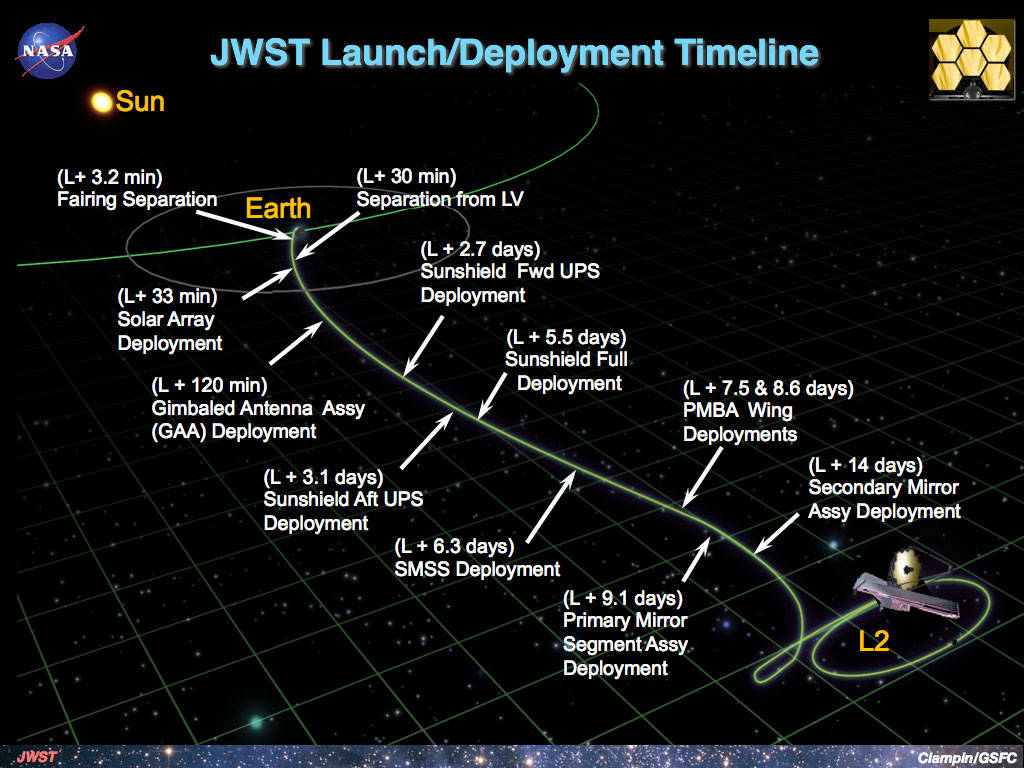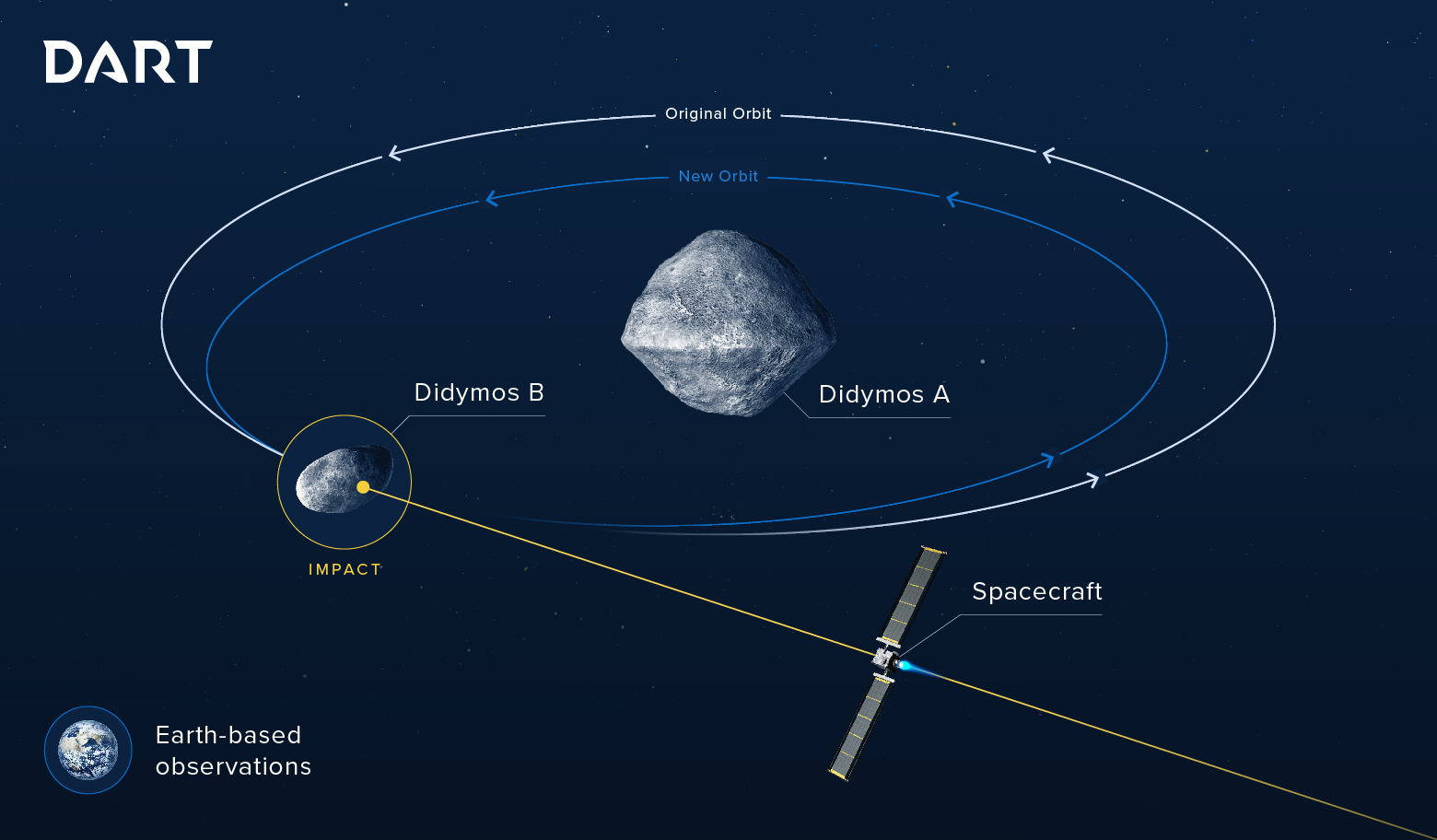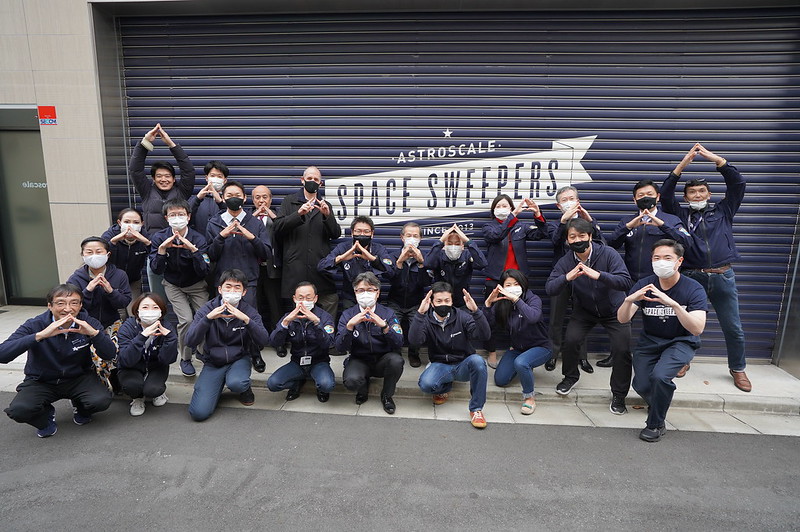
Writing about the space industry kept me sane during the tumultuous and trying times of 2020. While the pandemic swept around the world and America dealt with extremely divisive social and political issues, the space industry more or less plugged along.
Three missions launched to Mars. NASA got back into the human spaceflight game, thanks to SpaceX's Crew Dragon spacecraft. The OSIRIS-REx spacecraft touched an asteroid, while a Japanese vehicle returned with several grams of asteroid regolith, and China brought some Moon rocks back to Earth. In South Texas, some Starships lived, and some Starships died. All of it was glorious to watch.
As we look ahead to a new year, there is as much, if not more, space goodness to come. I asked readers for suggestions on Twitter about what they're anticipating in the coming year and received more than 400 responses. This list is a distillation of those ideas, plus some of my own, to compile the space goodness we most have to look forward to in 2021. Spoiler alert: There's a lot.
But first, a cautionary note: History has taught us not all of this will happen (see, for example, last year's space preview). And if a rocket or other major technical program has a timeline culminating in a "Q4" flight next year this far out, it will very likely slip into the following year. Nevertheless, we're making our best guess at what could happen this year in space.
The Mars fleet arrives
Three Mars missions launched from Earth during the summer of 2020, and all three are now approaching the red planet. The big question is, will all three make it safely there in February?
The United Arab Emirates' first mission to the red planet, Mars Hope, is due to arrive on February 9. At this time, the spacecraft will make a challenging maneuver to slow down and enter orbit around Mars with an altitude above the planet as low as 1,000km. If all goes well, the spacecraft will spend a Martian year—687 Earth days—studying the planet's atmosphere and better understanding its weather.
China has not said when, exactly, that its ambitious Tianwen-1 mission will arrive at Mars, but it's expected in mid-February. After the spacecraft enters orbit, it will spend a couple of months preparing to descend to the surface, assessing the planned landing site in the Utopia Planitia region. Then, China will attempt to become only the second country to soft-land a spacecraft on Mars that survives for more than a handful of seconds. It will be a huge moment for the country's space program.
-
Mars 2020 Perseverance launches in July.
-
The mighty "Dominator" Atlas V 541 goes supersonic with our newest Mars rover.
-
The stunning backdrop is courtesy of the launch taking place just a couple hours after sunrise.
-
Four solid-rocket motors and a single RD-180 engine produce a lot of smoke and fire.
-
So much smoke.
-
And so much fire.
-
Here's a view of the launch in infrared.
-
The Atlas V rocket has launched NASA's previous four missions to Mars.
-
This image provides a gorgeous view of the rocket launching from Space Launch Complex-41 at Cape Canaveral Air Force Station.
-
Love the pillar of smoke.
-
Four solids give the Atlas V rocket a kick off the pad.
-
Love this image.
-
A good vantage point shows the rocket lifting off over the Atlantic Ocean.
-
Nice vapor cone!
-
Goodbye, Percy!
NASA's Mars Perseverance will likely be the last of three missions to arrive at Mars, reaching the red planet in mid-February and attempting a landing in Jezero Crater on February 18. This entry, descent, and landing phase—much like with the Curiosity lander in 2012—will be must-see TV.
History suggests at least one of these three missions will not make it, but we'll hope to defy those odds.
More Starship flights
SpaceX ended up flying its Starship vehicle three times in 2020. Twice, it sent prototypes with a single engine to 150 meters. Then, in December, it sent a full-size prototype to an altitude of about 12.5km. During this stunning flight, the vehicle—complete with three Raptor engines, a nose cone, and flaps–executed a belly flop maneuver and very nearly landed safely in South Texas.
We can probably expect a lot more flights, to higher altitudes, in 2021. As SpaceX founder Elon Musk explained to Ars in February, SpaceX has been focused on building the machine to build the machine in South Texas. Now, much of that work is complete, and SpaceX is rapidly producing Starship vehicles at its Boca Chica launch site. In late December, as the company rolled its "Serial Number 9" Starship to the pad, components of vehicles 10 through 17 in various work at the factory-beneath tents.
At the same time, SpaceX is also beginning to fabricate the Super Heavy rocket that will serve as Starship's first stage. It seems plausible that one of the Starships presently under construction will make an orbital flight attempt atop Super Heavy this year. Or not. One thing is for sure—it will be fun to watch the trials, tribulations, and triumphs of SpaceX as it seeks to build an interplanetary spaceship the likes of which has never been seen before.
James Webb Space Telescope
Snarking about the delays in the launch schedule of the ultra-ambitious James Webb Space Telescope have become commonplace in the space community, and indeed this flagship astrophysics mission is far behind schedule and over budget.
However, it seems like NASA's current science leadership has addressed a number of the technical and management issues that had been plaguing the telescope program and causing delay after delay. Now, there seems to be quiet confidence that NASA's space telescope will stick to its Oct. 31, 2021 launch date on a European Ariane V rocket.

After the launch, tension will only increase as the telescope undergoes a two-week process that will see deployment of a sunshield as well as primary and secondary mirror assemblies. All of this could make for an exciting end of 2021 for astronomers—or a heartbreaking one if this complex process goes awry.
Big rocket debuts
If there are any constants in the universe, it's that the debut launch of a rocket will be delayed. Multiple times.
However, United Launch Alliance seems fairly confident that its powerful new Vulcan rocket will make its first flight in 2021, carrying Astrobotic's Peregrine lander to the Moon. During a conference call with reporters in December, United Launch Alliance chief Tory Bruno said, "Peregrine will go to space in the fourth quarter of 2021. Vulcan will be ready at that time "so they are not waiting on us," Bruno said.
However, we continue to harbor some doubts. Bruno said his company would not take delivery of the flight version of Vulcan's main engine, the BE-4, until the summer 2021 timeframe. This seems like a fairly narrow window in which to carry out all of the pre-flight checks. Our prediction is that the Astrobotic lander is not probably ready for a launch this year, and this provides cover for Vulcan not being ready for a 2021 launch, either. Hopefully we're wrong, and the big, new rocket takes flight.
A number of other large rockets are in late-stage development—including Japan's H3 booster and Europe's Ariane 6 rocket—but it now seems likely that the first flights of both will slip into 2022. Each development program has faced technical difficulties and delays due to the pandemic.
Small rockets everywhere
We can be confident that more small rockets will make their debuts in 2021. During the first half of this year we should see Firefly's Alpha booster take flight. This rocket has a lift capacity of nearly 1 ton to low-Earth orbit and will initially launch from Vandenberg Air Force Base in California.
At some point next year, I expect another US startup, ABL Space Systems, to debut its RS1 rocket. And during a recent interview with Ars, Relativity Space's CEO Tim Ellis reaffirmed that his company is on track to debut its Terran 1 rocket toward the end of 2021. All three of these efforts will be fun to track.
-
After being released from Cosmic Girl, LauncherOne ignited its engine successfully at the end of May, 2020.VirginOrbit
-
Virgin Orbit's Cosmic Girl aircraft took to the skies with its LauncherOne rocket.VirginOrbit
-
A view of the aircraft and rocket on the ground before the flight.VirginOrbit
-
Fueling began before sunrise.VirginOrbit
-
A close up of the rocket.VirginOrbit
-
The flight crew heads to the aircraft.VirginOrbit
-
Virgin Orbit has a second rocket nearing completion.VirginOrbit
Internationally, there should be some small rocket firsts as well. India is expected to fly its Small Satellite Launch Vehicle, or SSLV, for the first time during Q1 of 2021. And Europe's next-generation Vega C rocket should now launch in mid-2021 after some delays. One or more of China's myriad small launch companies will also debut rockets this year, certainly.
Finally, some small rockets will be making their next attempts to reach orbit. After suffering a delay due to rising numbers of COVID-19 cases in California, Virgin Orbit will fly its LauncherOne vehicle for the second time in early 2021. We should also see the third flight of Astra's small launcher, after the flight of its Rocket 3.2 very nearly reached orbit in December.
China's space station
China plans to launch the core module of its long planned space station on a Long March 5B rocket during the first half of 2021. This main module, named "Tianhe," will include the habitation chamber for taikonauts and international visitors to the station. This initial launch will be followed by fuel and supply missions, and then in 2022, two experiment modules.
The country plans to complete construction of the station within about two years, and China recently announced the selection of 18 new taikonauts who will fly aboard the station. The selection consisted of seven pilots, seven spaceflight engineers, and four payload specialists—but just one of these 18 people was a woman. This was the first time civilians were eligible to apply to join the corps.
The space station will orbit at an altitude of around 380km, with an inclination of between 41 and 43 degrees. It is expected that a cadre of three taikonauts will live on board the station for approximately six month increments, much as crew members do aboard the International Space Station led by NASA and Russia.
Artemis-1 mission
We're struggling with whether to include NASA's flagship exploration mission on this list. Why? Because although the Artemis-1 launch is scheduled to occur in November 2021, it seems unlikely to happen by then. This flight will see the debut launch of the Space Launch System rocket and Orion spacecraft. No crew would fly on this mission as Orion is sent around the Moon and back.
NASA has not set a formal date for this launch, and that will not happen until after the completion of a hot-fire test of the rocket's core stage at Stennis Space Center in Mississippi. Originally, this test was due to be completed during the summer of 2020, but the pandemic, hurricanes, and technical issues have delayed progress. A hot fire test now seems unlikely before mid-January, and this seemingly all but precludes a launch in 2021.
Therefore, at best, we're probably looking at a series of preparation activities for the launch of the Artemis I mission in 2021, rather than the launch of the large rocket itself.
Science mission launches
While the James Webb Space Telescope will get much of the attention next year, there are some other notable science mission launches coming as well.
First up is NASA's "Double Asteroid Redirection Test," or DART mission. Due to launch on a Falcon 9 rocket in July, this probe will visit the double asteroid Didymos in 2022. Once there, it will seek to strike the smaller of the two asteroids and determine whether it alters the speed and direction of Didymos B. This is an international mission, as a secondary spacecraft built by Italy will seek to record this impact, and a European spacecraft, Hera, will be sent later to measure DART's impact on the asteroid's trajectory.
Toward the end of the year, an Atlas V rocket is scheduled to launch NASA's Lucy probe, which will spend a dozen years visiting seven different asteroids. This mission is intended to study asteroids in the main belt and in Jupiter's orbit that may reveal information about the materials the clumped together for form the Solar System's planets.

Also, in October, a Falcon 9 rocket is scheduled to launch the Imaging X-ray Polarimetry Explorer, or IXPE mission, for NASA and the Italian Space Agency. It will study X-rays coming from black holes, neutron stars, quasars, and other exotic sources in the universe.
Finally, NASA has a couple of Earth observation satellites that will maintain or upgrade its existing fleet. The Landsat 9 satellite, which NASA will launch on an Atlas V rocket for the US Geological Survey, is due to launch in September. And the third member of the next-generation GOES satellites, GOES-T, is due to launch on an Atlas V rocket in December.
Commercial crew continues
The most notable spaceflight achievement of 2020 was the return of human spaceflight to the United States, first with the Demo-2 mission in May, followed by the Crew-1 launch in November. SpaceX will likely fly two more crewed missions to the International Space Station this year, and we can all hope for continued safe launches and returns.
Meanwhile, the other provider in NASA's Commercial Crew program, Boeing, is making progress back toward flight. After its December 2019 flight test of the Starliner spacecraft failed to reach the space station, the company and NASA intend to conduct a second test flight this year. The mission is currently scheduled for March 29, although the date may slip. Provided this Orbital Flight Test-2 mission goes smoothly, Boeing could conduct a crewed flight test later in 2021.
As a result, sometime in 2022, NASA may have not one but two operational vehicles to bring its astronauts into orbit.
Commercial lunar era begins
In 2019, NASA awarded its first contracts to commercial companies to bring small- to moderately-sized payloads to the Moon's surface. Now, two of these companies—Pittsburgh-based Astrobotic, and Houston-based Intuitive Machines—are preparing for flights that may occur this year.
Astrobotic will fly its Peregrine lander on a Vulcan rocket, carrying both NASA and private payloads to the Moon. The company's chief executive, John Thornton, said in a December interview that the company remains on track to build and fly its lander in 2021, although he admitted the COVID-19 has been a challenge Astrobotic continues to contend with.
Intuitive Machines plans to fly its Nova-C lander to the Moon on a Falcon 9 rocket, scheduled to launch no earlier than October of this year. This IM-1 mission will deliver six NASA payloads and six commercial payloads to the Oceanus Procellarum region of the Moon. Like Astrobotic, Intuitive Machines is working to a tight schedule to keep its flight on the 2021 manifest.
We're hopeful that at least one of these missions launches in 2021, opening an era when NASA, international partners, and commercial companies will begin a new era of lunar exploration hand-in-hand.
Chandrayaan-3 mission
Wait, there are more Moon missions!
The failure of India's Vikram lander to safely reach the surface of the Moon in September 2019 was a bitter disappointment for the nation's emerging space program. A subsequent analysis of the failure found it was caused by a software glitch.
However, the orbiter launched as part of this Chandrayaan-2 mission remains operational today, and India is getting ready to try again. Although the Indian space agency, ISRO, has not yet set a formal date, this Chandrayaan-3 mission could launch some time this year. It will not include an orbiter, but rather just the lander.
Rocket reuse milestones
SpaceX made a ton of progress on reusing its Falcon 9 rocket in 2020. By year's end, it had flown two separate first stages seven times. It seems possible, if not probable, that the company could fly one of these first stages 10 times by the end of next year. This was the original goal Elon Musk set when the company unveiled its final, Block 5 version of the Falcon 9 rocket in 2018.
The company could also work toward other milestones in 2021, including landing and possibly reusing a center core of a Falcon Heavy rocket. Of that rocket's three launches to date, the company has only managed to land the center core one time, in April 2019, after the launch of the Arabsat 6A mission. The core landed on a drone ship, but due to rough seas it could not be secured and later tipped over. SpaceX may fly up to three Falcon Heavy missions in 2021, so it's possible they not only land a center core, but also refly one for the first time.
Another launch company joined SpaceX in recovering its first stage boosters in 2020—Rocket Lab, when it fished an Electron core out of the Pacific Ocean in November. The core came back in pretty good shape, Electron's chief executive Peter Beck told Ars. The company will conduct further experiments in 2021 before it attempts to catch a rocket, falling beneath a parachute, with a helicopter. This attempt could well come next year and we are here for it.
Finally, several Chinese companies are experimenting with rocket reuse, along with the state agency and its Long March 8 rocket. We will likely see more of their activity in the coming year.
Suborbital space tourism
Is this finally the year? We've put commercial suborbital spaceflight on this list for a few years now, but so far Virgin Galactic and Blue Origin have yet to deliver the goods. Maybe 2021 will be the year.
Virgin Galactic said it was on track for its first commercial flight during the first half of 2021, but that was before its most recent flight, in December, when SpaceShipTwo's engine failed to light. The company plans two more test flights, at least, before opening the vehicle up to paying customers. We're offering no predictions on whether that happens this year, but the company will certainly feel pressure from stockholders if it does not.
-
Here's the view from 82km above Earth, during the company's first spaceflight in December 2018.
-
Virgin Galactic's SpaceshipTwo takes off for a suborbital test flight of the VSS Unity on December 13, 2018, in Mojave, California.
-
Presently, the company is flying from Mojave, Calif. But after its test phase, commercial operations will take place in southern New Mexico.
-
Is this the year paying customers fly into space on VSS Unity and White Knight Two?
-
A look at both the carrier aircraft and USS Unity spacecraft.
-
VSS Unity burned its engines for 60 seconds during the December 2018 flight.
-
Virgin Galactic's VSS Unity comes in for a landing after its first suborbital test flight.
And then there's Blue Origin, which flew its New Shepard launch system just a single time in 2020. The company appears to be close to flying its human-capable capsule—the vehicle that will be used to take passengers into space. But it is not clear when humans will actually get on the vehicle. Maybe toward the end of 2021? We'll know the date is close at hand when Blue Origin finally begins selling tickets to space.
Space station goodness
In addition to the regular business of keeping the International Space Station supplied, and crewed, there may be some potentially interesting launches in 2021.
First up, we hope, is Russia's Nauka module. This has been in the works for more than a decade, and will provide the Russian segment of the station with more room for living and working, as well as a backup attitude control system for the station. The latest rumors suggest the module will now launch in July 2021 to the station. But we're not fully going to believe this one's going to space until it's on the launch pad.
This year, Made in Space's "Industrial Crystal Facility" should also fly to space. This will serve as a platform to explore whether industrial crystals can be grown in microgravity to larger sizes, or with an improved quality compared to those on Earth. If you're interested in the commercialization of low-Earth orbit, this is one area to watch.
Finally, Axiom's AX-1 mission may fly to the International Space Station near the end of the year. This privately funded mission, on board a Crew Dragon vehicle, will be commanded by Michael López-Alegría. The full crew of paying customers—presumably three others—will probably be unveiled in January. Note, this first mission will not include actor Tom Cruise, as that mission to film a movie in space has been deferred by a year or two.
Orbital debris
The year 2020 saw hundreds of new satellites added to low-Earth orbit as SpaceX and OneWeb began to build out their megaconstellations to provide broadband Internet from space. Hundreds of more satellites are sure to follow, raising the chances of a serious debris event in the coming years.
Hopefully, 2021 is the year we finally get serious about dealing with this issue by creating some enforceable best practices for satellite operators, and taking proactive steps toward mitigating debris. To that end, we're excited about Astroscale's ELSA-d mission. Scheduled to launch on a Soyuz rocket in March, Astroscale plans to put a servicer spacecraft with a mass of about 175 kilograms, and a 17-kilogram client satellite, into orbit. Once there, the larger satellite will attempt to repeatedly dock and release the smaller satellite, proving out some of the technology needed to grapple and move dead satellites and debris.

This is the first step toward commercial debris removal, and it might spur the US and other governments for whom space is a valuable resource to fund more efforts to preserve congested orbits.
Whither Artemis?
It's been abundantly clear for awhile that NASA's goal to land humans on the Moon by 2024 was not going to happen. And now that Congress has finally completed a fiscal year 2021 budget—which provides $850 million for a Human Landing System, one quarter of what NASA requested—that is certain not to happen.
So how will the incoming Biden administration handle the Artemis Program, which was championed by the Trump Administration? It's not a bad program. It seems to be a rather good one. But it won't be cheap, or fast. We may get some indication fairly early on with the Human Landing System contracts. NASA was due to down select from three competitors, the National Landing Team, Dynetics, and SpaceX, to one or two bids this spring. Will that still happen? Will there be one or two bidders? Will the Biden administration instead turn its focus to sending humans directly to Mars?
These are among the many, many questions that we'll find the answers to in 2021.
https://ift.tt/2X9VS4n
Science
No comments:
Post a Comment